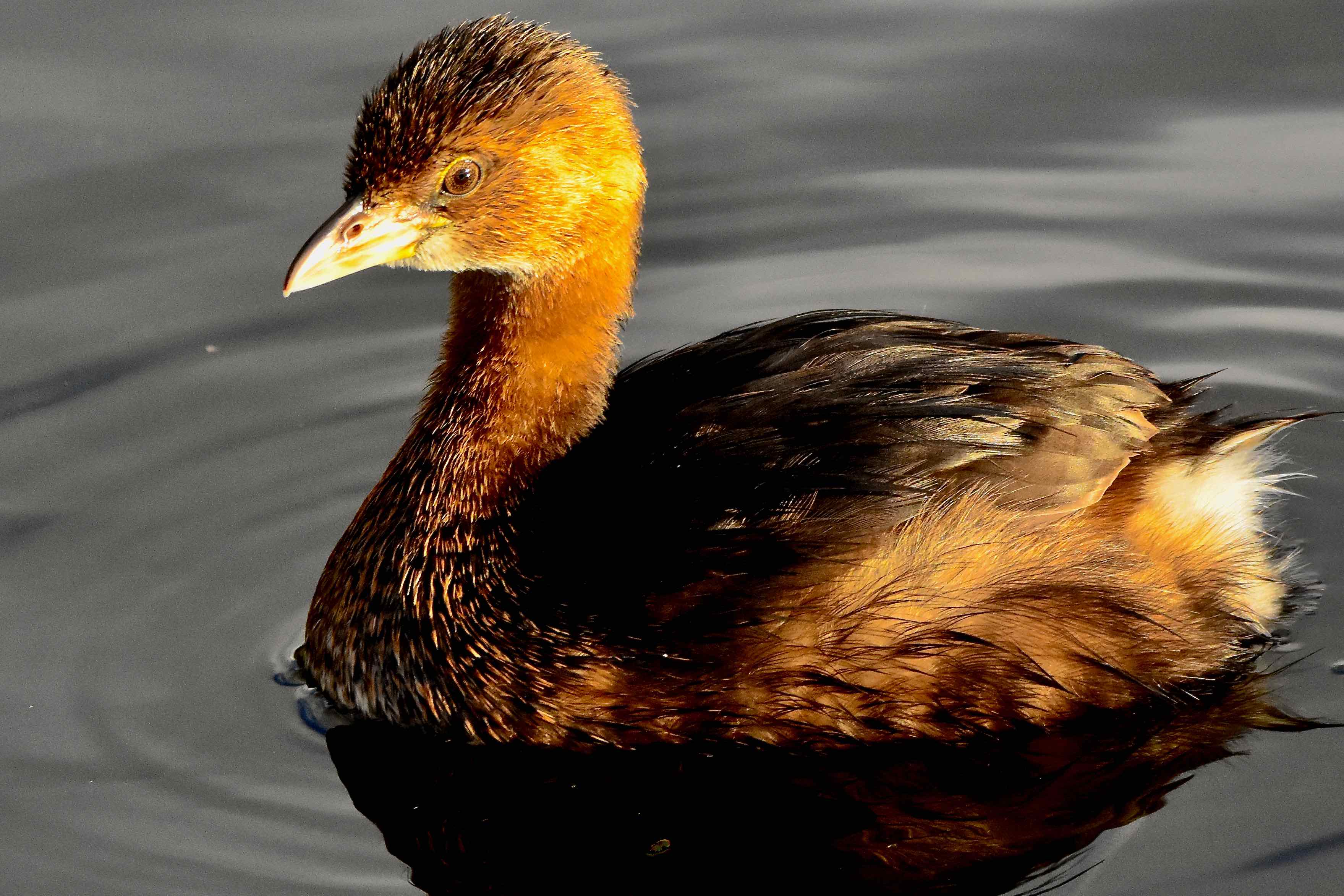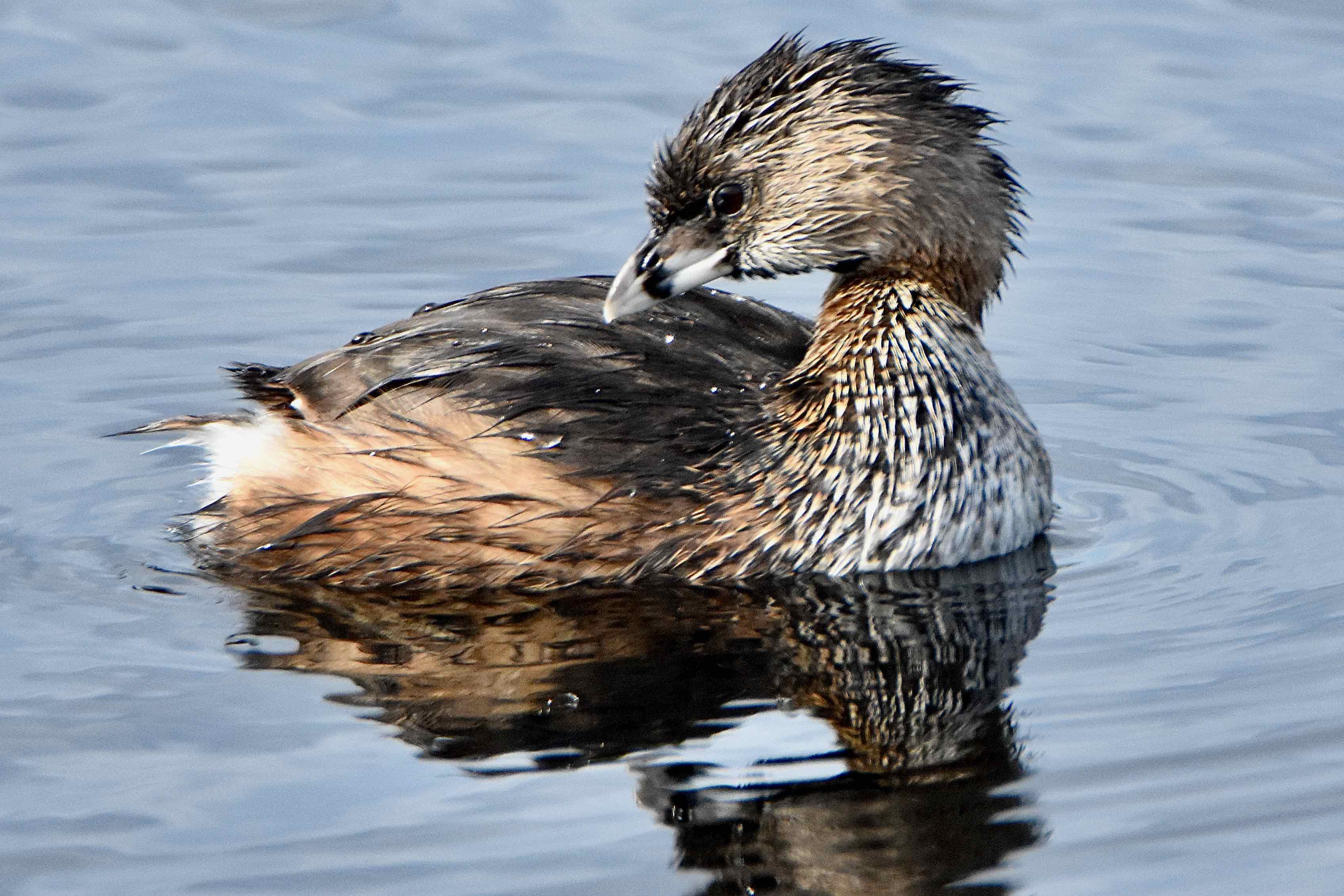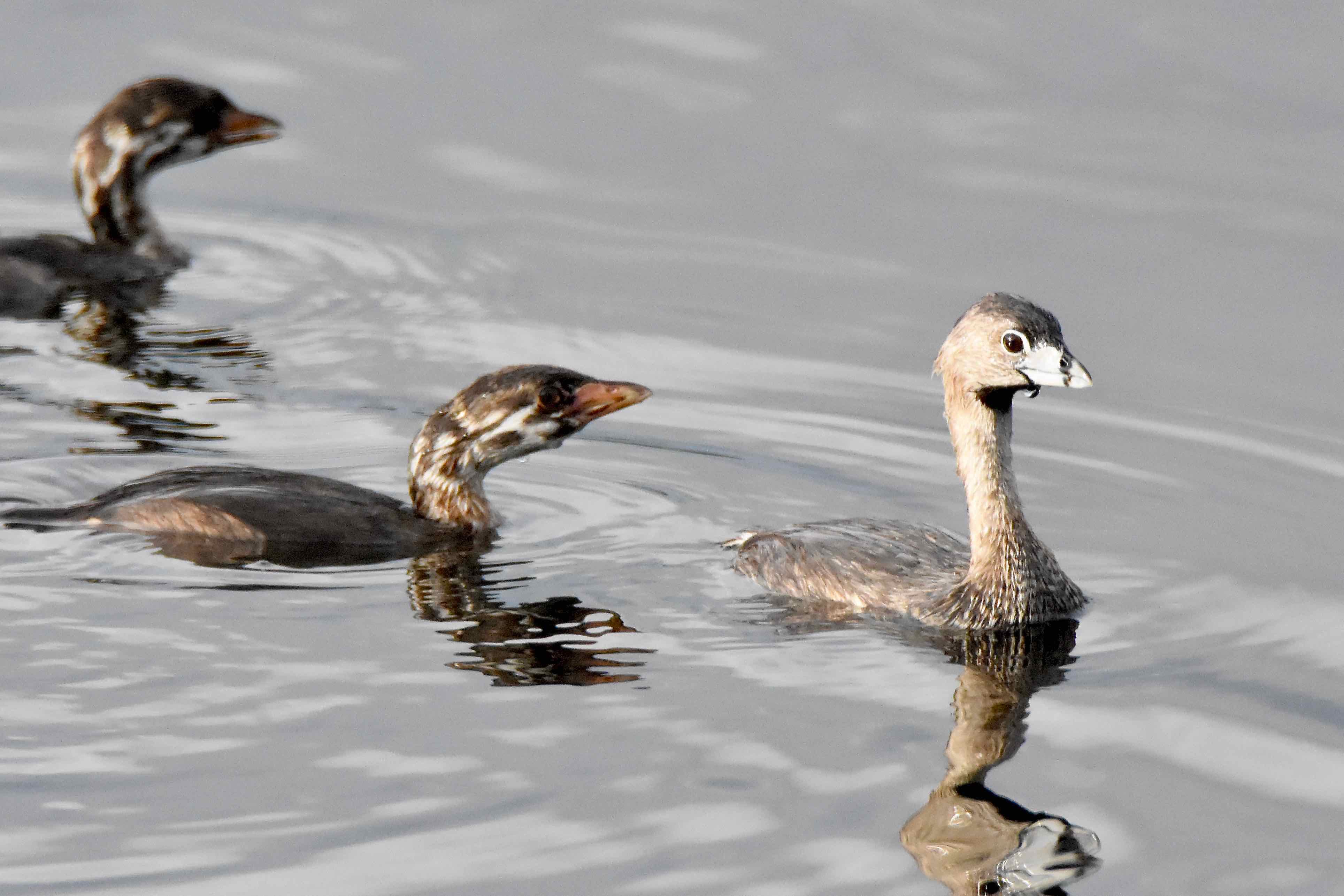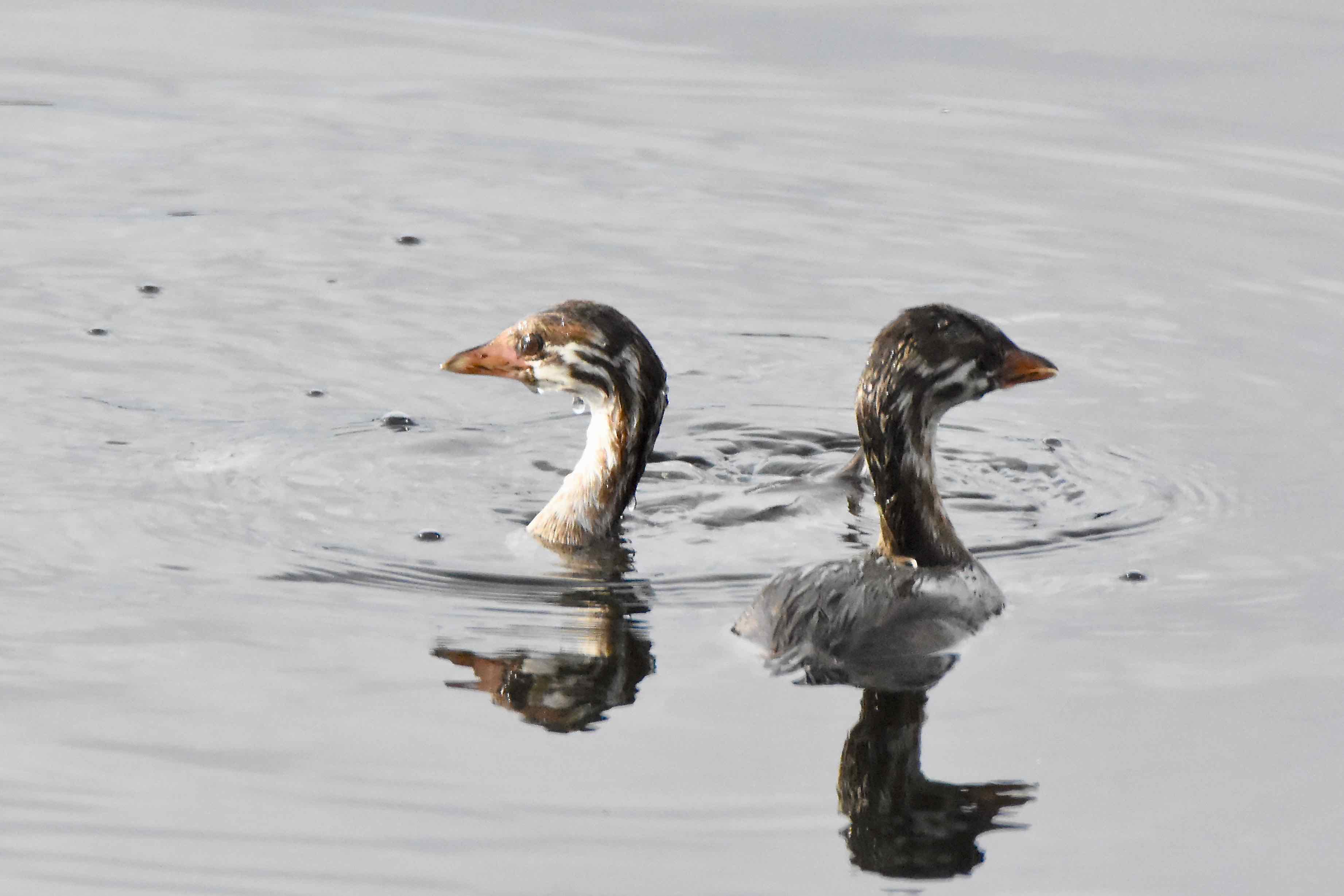
Pied-billed grebe, photographed at Green Cay Nature Center, Boynton Beach, Palm Beach County, in January 2017.
If it looks like a duck and swims like a duck, it's not necessarily a duck. Take a closer look. It could be a pied-billed grebe, Podilymbus podiceps.
Like ducks, grebes spend the majority of their time on the water, and there are some similarities in appearance, but grebes are quite different in several ways. Their bills are small and triangular, as opposed to a duck's flat, wide bill. Their feet are lobed, not webbed. While many ducks "dabble" for food, grebes dive for their meals, swimming underwater for bugs, crustaceans or fish. They seemingly disappear underwater and reappear in the most unpredictable of places.
Grebes are relatively small birds, going perhaps 15 inches in length and having a wingspan of less than two feet. Males are larger than females, but the coloration is the same between the sexes — a mix of whites, blacks, grays and browns, with a small white tail. They do change colors, depending on the season.
The bird gets its name from its most prominent feature — the two-toned bill. It is pied as in two different colors. The bill has a large black, vertical bar particularly noticeable in spring during mating season. The "pied" bill is best seen in the photos below.
Pied-billed grebes are migratory birds, coming here in the fall to escape winter's wrath. But there's also a year-round population in South Florida. Two of the photos below, taken in July 2018, show immature grebes at Green Cay Nature Center in Boynton Beach. In extreme northern U.S. and Canada, it is a summer visitor. Year-round populations are also found in Mexico, Central America and South America as far south as Argentina.
Like many water birds, pied-billed grebes suffered severe population losses through the latter part of the 20th century because of habitat loss and the residual effects of pesticides, such as DDT. In recent years, the population has rebounded, though far from plentiful. Generally speaking, the species is not considered threatened; the International Union for Conservation of Nature lists it as least concern. However, some states, particularly in the Northeast, classify it as threatened or endangered. New Hampshire lists grebes as endangered, Massachusetts as threatened, Vermont as a species of special concern and Rhode Island considers it locally extinct.
Pied-billed grebes are not great flyers, and they don't have the greatest mobility on land because their legs are located farther back on their anatomy than most birds. That little quirk, though, helps make them powerful swimmers. They also have the ability to trap air in their feathers, giving them additional buoyancy and streamlining their bodies.
They tend to be secretive, especially during breeding season in the spring. Grebes build floating nests of grasses and other aquatic plants in heavy cover. It's a chore both male and female undertake over the span of about a week.
Females on average lay six eggs per clutch, one egg per day, which incubate for about three-and-a-half weeks before hatching. The chicks will begin to swim the first day but will spend most of their time riding on the backs of their parents. Gradually, they build up endurance, and within about a month they can independently feed themselves. Grebe young typically fledge within two months of hatching. Although grebes are generally solitary, the newly fledged often will hang with their siblings for a few months afterwards. Pied-billed grebes are members of Podicipedidae, a family of 22 species, all grebes. And while they're not related to ducks, there is evidence that puts them close to an unlikely water bird — flamingos.
Fun fact: Pied-billed grebes are known to eat their own feathers, and will feed them to their young. The reason isn't clear, but the theory is that the feathers act as a filter of sorts that prevents harmful objects from passing through to their intestines.
Click on photo for larger image
Links for Pied-Billed Grebe



